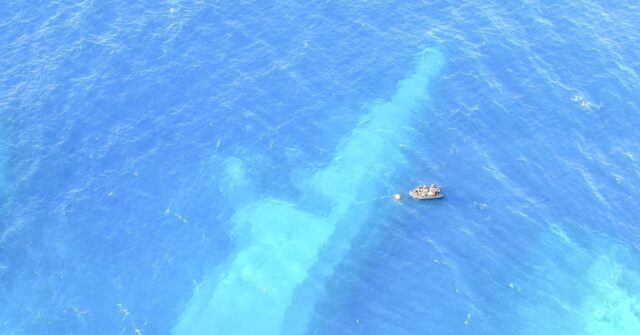A recent preliminary report from a military Court of Inquiry revealed that the grounding and subsequent sinking of the New Zealand navy ship HMNZS Manawanui off the coast of Samoa was primarily due to a series of human errors made by the crew. The incident occurred in October, about 1.6 kilometers (a mile) from Upolu Island, and although all 75 personnel aboard were able to evacuate safely, the loss of the ship marked a significant event for the New Zealand navy, as it was the first naval vessel lost at sea since World War II. Initial confusion regarding the cause of the disaster led to an investigation ordered by Chief of Navy Rear Admiral Garin Golding, who emphasized that the crew failed to disengage the autopilot, maintaining course toward land without manual control.
According to Admiral Golding, the crew mistakenly attributed the inability of the vessel to respond to steering commands as a malfunction of the thruster controls rather than recognizing that the autopilot had not been turned off. This oversight has been categorized as the direct cause of the grounding incident, compounded by various factors such as inadequate training, planning discrepancies, poor supervision, and insufficient risk assessment. The inquiry, ongoing and expected to last until the first quarter of next year, will not only clarify the events further but will also instigate a disciplinary process involving three crew members who were at the helm during the incident, including the officer in charge, the supervising officer, and the commanding officer.
Amid the scrutiny of the investigation, Admiral Golding expressed his commitment to restoring public trust in the navy, taking personal responsibility for the incident and pledging to learn from the missteps. He recognized the challenges posed by online criticisms directed at the ship’s captain, a woman, which had escalated into abusive comments. In response, New Zealand’s Defense Minister voiced strong condemnation of the misogynistic remarks, highlighting the need for respect and professionalism in naval leadership. This public controversy underscores broader societal attitudes towards women in positions of authority, particularly in fields traditionally dominated by men.
The ship, a specialized dive and hydrographic vessel that had been operational since 2019, was conducting surveys when the unfortunate grounding occurred. Following the sinking, there were immediate concerns regarding environmental safety, particularly along the Samoan coast due to potential fuel leaks from the sunken vessel. While New Zealand officials acknowledged the presence of diesel in the surrounding waters, they asserted that the majority of the fuel was consumed during the fire and no significant environmental damage has been reported. Nonetheless, a slight and ongoing leak has been noted, prompting the navy to monitor and address potential pollution hazards diligently.
In taking remedial actions, officials announced plans to transport specialized equipment from New Zealand to Samoa to facilitate the removal of fuel and other potential contaminants from the wreck site, which underscores the navy’s responsiveness to environmental concerns. Notably, the detailed plans surrounding the recovery of the ship itself from the reef have yet to be disclosed, indicating a need for further deliberation on how to proceed without exacerbating the situation.
Finally, Admiral Golding emphasized that the Navy would take ownership of the incident, learn from the mistakes made, and ultimately aim to restore both its operational integrity and public confidence. The inquiry’s findings will contribute to a broader understanding of how human errors can drastically impact naval operations and highlight the importance of rigorous training, adherence to protocol, and risk management within military settings. The hope is that these lessons learned will shape future naval practices and ensure that the New Zealand navy continues to honor its commitments and reputation in both domestic and international maritime contexts.

